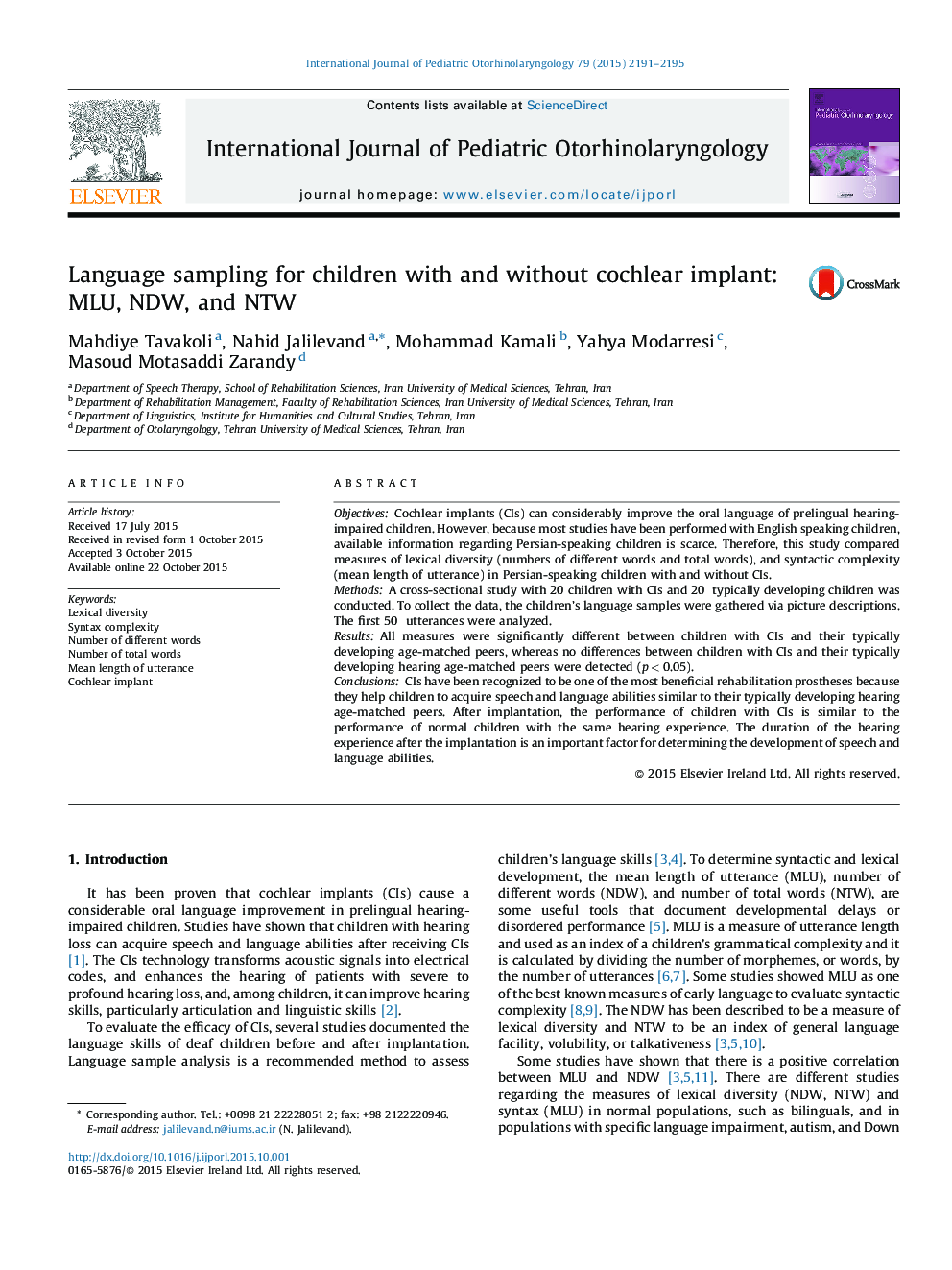| Article ID | Journal | Published Year | Pages | File Type |
|---|---|---|---|---|
| 4111585 | International Journal of Pediatric Otorhinolaryngology | 2015 | 5 Pages |
ObjectivesCochlear implants (CIs) can considerably improve the oral language of prelingual hearing-impaired children. However, because most studies have been performed with English speaking children, available information regarding Persian-speaking children is scarce. Therefore, this study compared measures of lexical diversity (numbers of different words and total words), and syntactic complexity (mean length of utterance) in Persian-speaking children with and without CIs.MethodsA cross-sectional study with 20 children with CIs and 20 typically developing children was conducted. To collect the data, the children's language samples were gathered via picture descriptions. The first 50 utterances were analyzed.ResultsAll measures were significantly different between children with CIs and their typically developing age-matched peers, whereas no differences between children with CIs and their typically developing hearing age-matched peers were detected (p < 0.05).ConclusionsCIs have been recognized to be one of the most beneficial rehabilitation prostheses because they help children to acquire speech and language abilities similar to their typically developing hearing age-matched peers. After implantation, the performance of children with CIs is similar to the performance of normal children with the same hearing experience. The duration of the hearing experience after the implantation is an important factor for determining the development of speech and language abilities.
